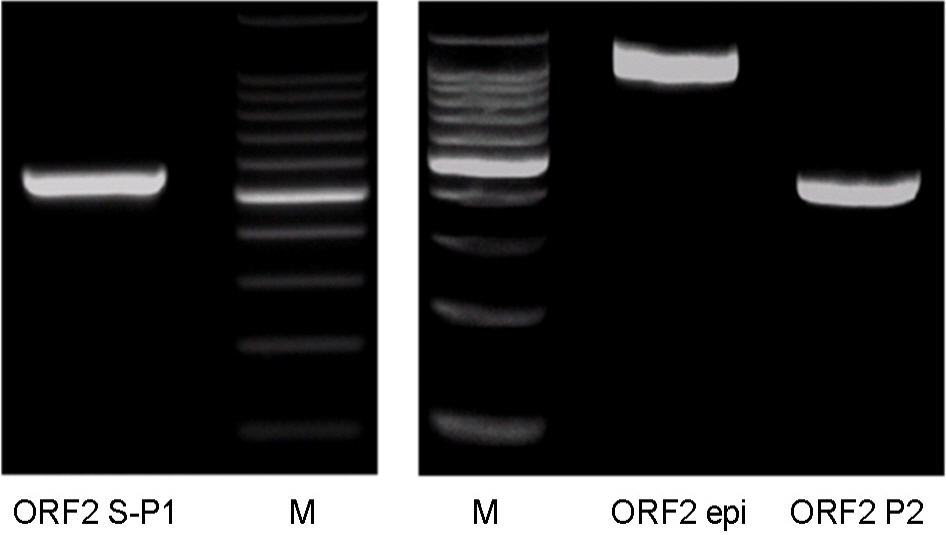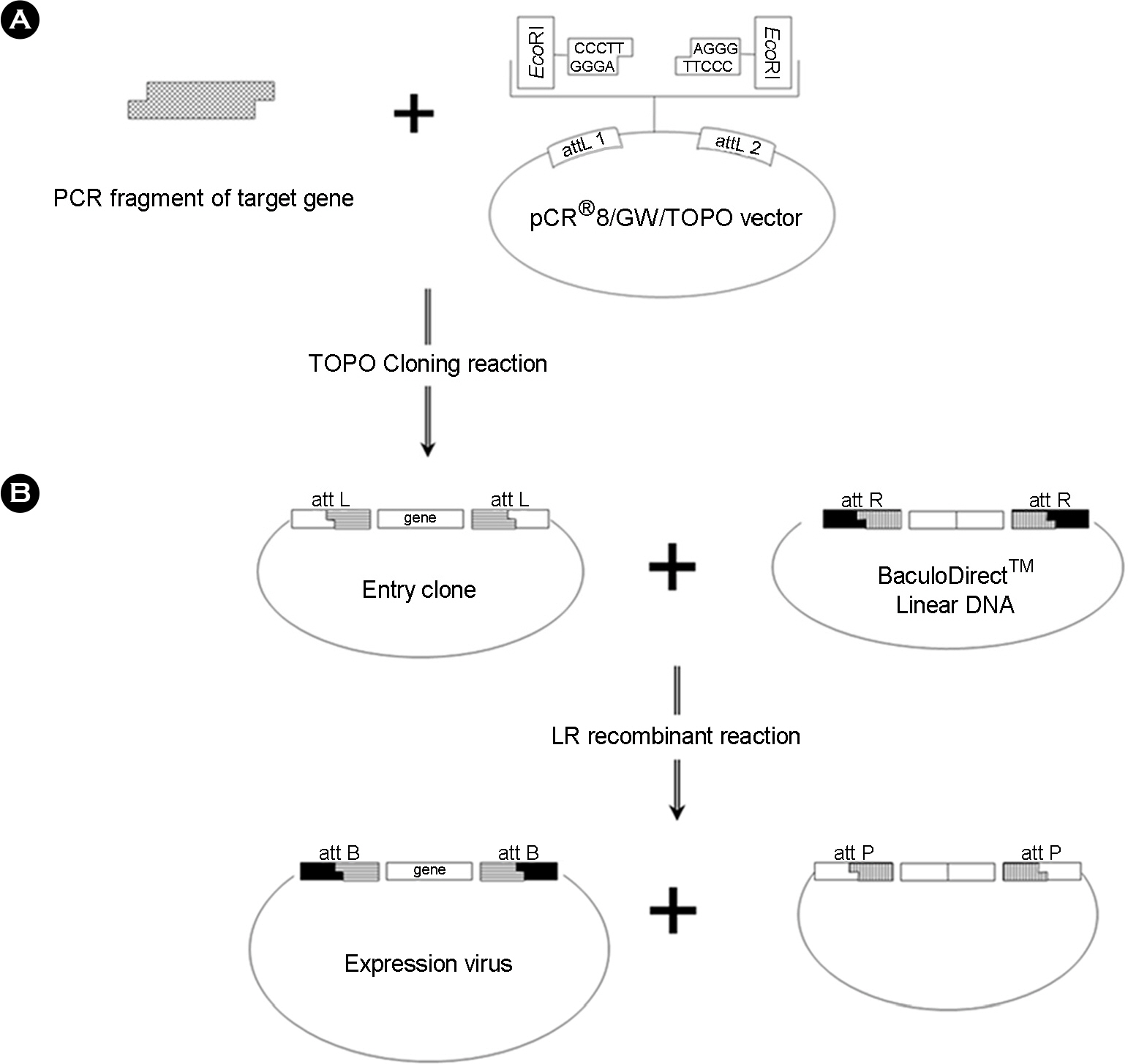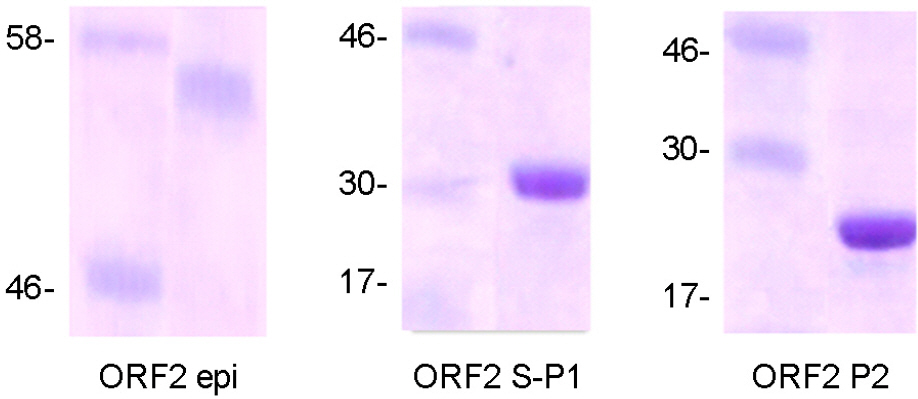J Bacteriol Virol.
2011 Sep;41(3):183-187. 10.4167/jbv.2011.41.3.183.
Protein Expression of the Human Norovirus Capsid Gene using the Baculovirus Expression System
- Affiliations
-
- 1Department of Microbiology, College of Medicine, The Catholic University, Seoul, Korea. paik@catholic.ac.kr
- 2Department of Dermatology, College of Medicine, The Catholic University, Seoul, Korea.
- 3Department of Agricultural Biology, National Academy of Agricultural Science, Rural Development Association, Suwon, Korea.
- KMID: 1449893
- DOI: http://doi.org/10.4167/jbv.2011.41.3.183
Abstract
- Human norovirus (HuNoV) is the major etiological agent of nonbacterial gastroenteritis worldwide. However, due to the absence of a rapid and sensitive diagnostic system, detection and monitoring have been limited. The HuNoV genome is composed of three open reading frames (ORFs). And major capsid protein, ORF2, is designated as a viral protein 1 (VP1). In this study, the baculovirus expression system was used for expression of the HuNoV capsid protein, VP1. Recombinant baculoviruses can be used as potent tools in HuNoV studies.
MeSH Terms
Figure
Cited by 1 articles
-
Protein Expression of the
Bombyx mori Decapentaplegic Gene using the Baculovirus Expression Vector System
Seong Tae Jeong, Seung-Won Park
J Bacteriol Virol. 2015;45(3):256-261. doi: 10.4167/jbv.2015.45.3.256.
Reference
-
1). Jiang X., Wilton N., Zhong WM., Farkas T., Huang PW., Barrett E, et al. Diagnosis of human caliciviruses by use of enzyme immunoassays. J Infect Dis. 2000. 181:S349–59.
Article2). Hardy ME., Estes MK. Completion of the Norwalk virus genome sequence. Virus Genes. 1996. 12:287–90.
Article3). Prasad BV., Hardy ME., Dokland T., Bella J., Rossmann MG., Estes MK. X-ray crystallographic structure of the Norwalk virus capsid. Science. 1999. 286:287–90.
Article4). Okame M., Shiota T., Hansman G., Takagi M., Yagyu F., Takanashi S, et al. Anti-norovirus polyclonal antibody and its potential for development of an antigen-ELISA. J Med Virol. 2007. 79:1180–6.
Article5). Okada M., Ogawa T., Kaiho I., Shinozaki K. Genetic analysis of noroviruses in Chiba Prefecture, Japan, between 1999 and 2004. J Clin Microbiol. 2005. 43:4391–401.
Article6). Stene-Johansen K., Grinde B. Sensitive detection of human Caliciviridae by RT-PCR. J Med Virol. 1996. 50:207–13.7). Yan H., Yagyu F., Okitsu S., Nishio O., Ushijima H. Detection of norovirus (GI, GII), Sapovirus and astro-virus in fecal samples using reverse transcription single-round multiplex PCR. J Virol Methods. 2003. 114:37–44.
Article8). Farahtaj F., Gallimore CI., Iturriza-Gomara M., Taremi M., Zali MR., Edalatkhah H, et al. Rotavirus VP7, VP4 and VP6 genotypes co-circulating in Tehran, Iran, between 2003 and 2004. Epidemiol Infect. 2007. 135:834–8.
Article9). Dreier J., Störmer M., Mäde D., Burkhardt S., Kleesiek K. Enhanced reverse transcription-PCR assay for detection of norovirus genogroup I. J Clin Microbiol. 2006. 44:2714–20.
Article10). Park JK., Suh CI., Lee NS., Lee SG., Cheon DS., Oh MH, et al. Antibody Production of Baculovirus-expressed VP6 from Porcine Group C Rotavirus. J Bacteriol Virol. 2010. 40:83–9.
Article11). Yun SI., Kim JK., Song BH., Jeong AY., Jee YM., Lee CH, et al. Complete genome sequence and phylogenetic analysis of a recombinant Korean norovirus, CBNU1, recovered from a 2006 outbreak. Virus Res. 2010. 152:137–52.
Article12). [. http://www.cdc.gov/ncidod/dvrd/revb/gastro/norovirus-factsheet.htm. ].13). Wobus CE., Karst SM., Thackray LB., Chang KO., Sosnovtsev SV., Belliot G, et al. Replication of Noro-virus in cell culture reveals a tropism for dendritic cells and macrophages. PLoS Biol. 2004. 2:e432.
Article14). Ma Y., Li J. Vesicular stomatitis virus as a vector to deliver virus-like particles of human norovirus: a new vaccine candidate against an important noncultivable virus. J Virol. 2011. 85:2942–52.
Article15). Hunt I. From gene to protein: a review of new and enabling technologies for multi-parallel protein expression. Protein Expr Purif. 2005. 40:1–22.
Article
- Full Text Links
- Actions
-
Cited
- CITED
-
- Close
- Share
- Similar articles
-
- Protein Expression of the Bombyx mori Decapentaplegic Gene using the Baculovirus Expression Vector System
- Expression of Phospholipase C-B3 using Recombinant Baculovirus Expression System
- Expression of human norovirus VP1 gene and VP1-specific monoclonal antibodies
- Mouse Dual Ig Domain Containing Cell Adhesion Molecule Protein Expression and Purification Using the Baculovirus Expression Vector System
- Intracellular Localization of the Japanese Encephalitis Virus Capsid Protein




